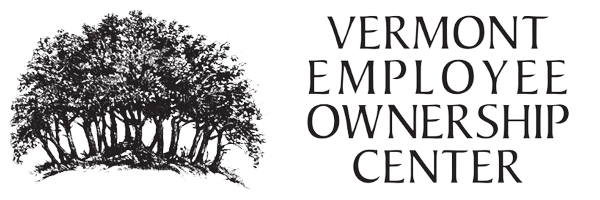Our mission at VEOC is to “promote and foster employee ownership” in Vermont. Sometimes, that means providing support and education so that a business can successfully make the transition to ownership by its employees. Other times, it means identifying resources or creating opportunities to help existing employee-owned companies respond to a challenge. And on occasion we have the chance to provide assistance to entrepreneurs ready to launch a new business with employee ownership built in from the start.
It goes without saying that we love to see companies become employee-owned and thrive under the model, creating new ownership opportunities for employees long into the future. That’s not, however, how the story always goes. It likely comes as no surprise that even with the considerable tax advantages, employee ownership itself does not make a company immune to the market forces that push a business to adapt, dissolve, or sell. And while we know from decades of evidence that employee ownership can help a company be more agile, the pressures to dissolve or sell are still very present for employee-owned companies today.
Typically, these pressures – to dissolve or to sell – apply to different types of companies, the former weighing down on companies that are failing to thrive and the latter impacting those doing so well that outside buyers are taking notice. In the case of the pressure to sell, the type of employee ownership is also relevant. While worker cooperatives are able to minimize incentives to sell, and Employee Ownership Trusts cannot be forced to sell to an outside buyer, Employee Stock Ownership Plans are vulnerable to acquisition offers due to the Trustee’s obligation to act in the best interest of the company’s employee owners. That is, if a private equity firm swoops in with an offer that could put large sums of money in the hands of employee owners, the trustee often has little choice but to accept the offer.
Advocates of ESOPs have long gone back and forth over whether this aspect of the trustee’s duties to shareholders is a feature or a bug. On the one hand, the rewards of employee ownership are rarely as visible as when dozens or even hundreds of employee owners get a life-changing payday all at once. On the other hand, when those employee owners cash out, the door closes to the opportunity for that kind of wealth creation for the next generation of employees.. At VEOC, we believe we can encourage the preservation of employee ownership for future employees while also celebrating the major win for employee owners if and when their company sells.
The story of Alliance Group
In 2010, brothers Jason and Shaun Patnaude brought together several fellow HVAC industry veterans and set up shop in Essex Junction. No surprise to Jason and Shaun, the Alliance Group team knew how to navigate the Vermont market and did very well in the years following. By 2018, the two co-founders had created something of considerable value and were looking to sell, ultimately deciding to sell the entire company to its employees through an Employee Stock Ownership Plan, which included as beneficiaries several employees who had been with the company since its start in 2010.
At the time of the 2018 sale, Shaun noted that a sale to an outside buyer “didn’t tick off all the boxes” for them and their core values. “We could have sold it for more to a private bidder,” he said, “but it wouldn’t have been the right thing for our employees, or even Jason and I, who would like to continue working here.”
In the years leading up to and following the 2018 ownership transition, the company grew quickly, receiving the Vermont Business Growth Awards multiple times, including in 2022, for their strong five-year growth rates. Then, in April of 2023, the news was announced that the company had accepted an offer from growth-oriented private equity firm, Trinity Hunt Partners. The offer, according to co-founder Jason, was roughly three times more than the brothers received when they sold the company to the ESOP in 2018.
With an offer like this, the aforementioned fiduciary duty of the ESOP trustee may come to mind, but not every ESOP sale is the case of a trustee’s hands being tied by regulations. Jason tells VEOC that the company had a number of reasons to accept the offer, including the amount of money that would be going into employee owners’ hands, the advantages of having the support of a well-capitalized firm in a shifting and consolidating industry, the favorable timing of the offer given current economic and supply chain trends, and the specifics of Trinity Hunt’s stated ambitions with the company.
“These guys were definitely people- and culture-minded,” Jason says about Trinity Hunt. “They’re not about changing what we do; they want to buy us and 30 other companies and create a national presence based on what we do today – because we do it well. But I think having a national presence in the future could pay off quite a bit for our longevity.”
Also behind the decision were the disappointing results of Alliance’s efforts to establish a culture around employee ownership. While Jason says the company has a strong team-oriented culture, he also acknowledges that in its five years with an ESOP, the employee ownership mindset “just didn’t grab ahold” as they had hoped. When Trinity Hunt approached the company, losing the employee ownership model wasn’t a major concern for the employee owners when measured against the financial and strategic benefits of the sale.
“I wouldn’t tell anyone not to form an ESOP,” Jason said. “I think it’s a very good option, but I think the current culture and type of people that you have in the company should be considered a little more.”
At VEOC, we agree that culture is absolutely essential to the success of an employee-owned company, and studies support the conclusion that an employee ownership structure will reveal its full potential only when paired with high participation culture and management practices. A significant amount of our educational work is dedicated to addressing this half of the employee ownership coin (see this presentation from our 2022 conference, for example). Still, there is much work to be done in the ecosystem to increase awareness around the importance of participatory management and share tools for doing so.
In the end, Jason celebrated the ESOP for allowing he and Shaun to receive the value they were happy with when they sold to employees in 2018 and then creating the opportunity for a meaningful payday for employees in April.
“We ended up making a deal that was great for all the shareholders; they’re going to get paid out today basically what they might have got paid out eight to ten years from today,” Jason said. “Only three months down the road, you walk in our office and you couldn’t tell whether we did or didn’t sell. Nothing has changed.”



